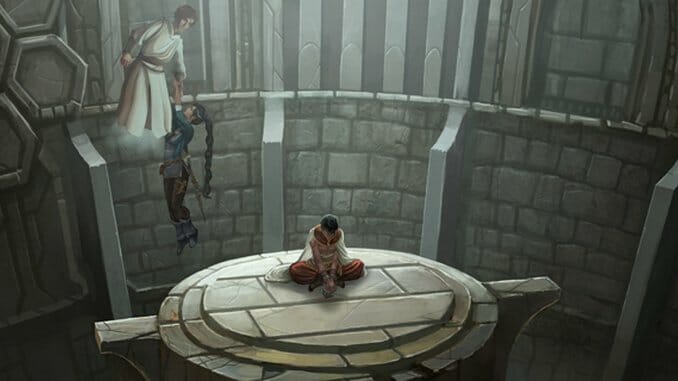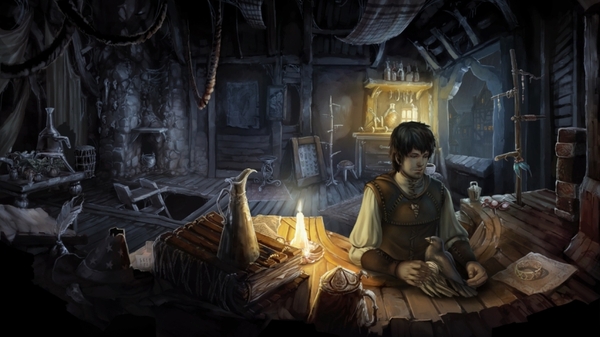Memoria (PC/Mac)

Daedalic Entertainment is firmly entrenched as one of the leading developers of point and click adventure games. Hot on the heels of Night of the Rabbit—a charming nostalgia trip through the best parts of the genre—comes Memoria, a follow-up to their 2011 adventure The Dark Eye: Chains of Satinav. Both games are based on Germany’s most popular pen-and-paper role-playing game, Das Schwarze Auge, or, as it’s known in English, The Dark Eye. Think Dungeons & Dragons but, y’know, German.
Set in The Dark Eye’s pastoral world of Aventuria, Satinav introduced us to Geron, a negative and whiny bird-catcher turned hero. In the sequel, you get to play through the same village with the same character cracking similar jokes to townsfolk, many of which you’ve already met. Fun times.
The concern with Geron from the outset is that he has little reason for staying in the town. Even after saving the world in the last Dark Eye game citizens and neighbors still look at him with disdain. They’re wary of magic, and now, after a new string of mysterious attacks in the forest turned some would-be robbers into stone, Geron is boxed in even more by their suspicion. His only purpose now is to turn his love Nuri from a raven back to her former self. The first chapters of the game involve Geron trying to solve a riddle that he received from a traveling merchant. Once he solves the riddle, he can get Nuri back. The problem is that nobody is giving him answers. Also, besides one destruct and restore spell, he can’t perform any magic without drawing suspicion. Life moves slow here, both for Geron and the player.
However, any complaints players might have about Geron are completely balanced out by the introduction of Sadje—an exiled princess that you meet through flashbacks. She’s on a separate quest to gain fame and defeat her enemies by uncovering a mysterious artifact. The player switches between the two, unraveling the mystery behind the riddle that’ll save Nuri, along with the rest of Aventuria. The two timelines aren’t linked by traditional means, but pieces and facts you encounter along the way with both characters put them together and carve out a refreshing narrative that is perfectly paced and unravels at just the right moments.
While the two stories work together, it’s really only Sadje’s that stands on its own. That’s due to her heroic capabilities and the amount she has at stake. If the two had met early in the game, Sadje would have probably scoffed at Geron’s lack of conviction, kicking him into shape while doing everything herself. She’s everything Geron is not: self-sufficient, determined, intelligent, and with nothing left to lose, making her a more appealing character to follow. At the start of the game she’s managed to get herself locked in a tomb with a sarcastic, talking magical staff while her companions have left her to die, but she manages to escape. In other parts, she does whatever’s necessary to remain afloat by surviving in the woods and making weird deals. Not only is Sadje a great female character, but she’s one of most well-rounded and intriguing videogame characters of the last five years.
You can’t switch between the two at will. Rather, Memoria transitions at predetermined intervals. Usually each act involves one scenario with each hero and what you see and learn in one informs the other, although not always in a linear fashion. Each character has their own motivations outside of the riddle and the artifact, but even the most seemingly random of tasks can reveal something. The fact that Daedalic was able to have these two stories work off each other is a feat in itself, regardless of what you may think of the characters.
